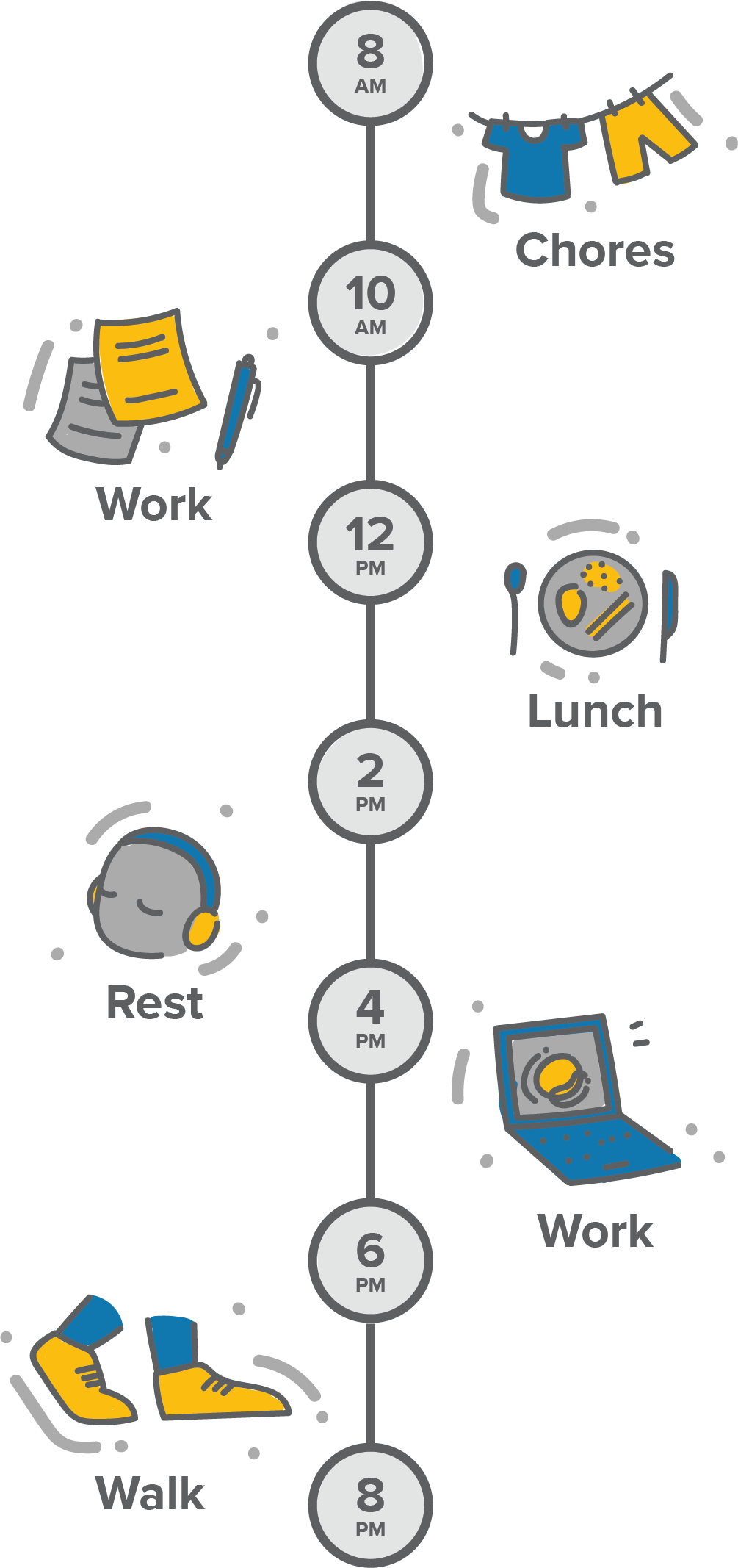Becoming a Self-Manager
Brain Breaks
Updated Aug 8, 2019
Swipe right to go to the next slide
As you recover from your concussion, you may find that it takes you more effort, or energy, to complete tasks, such as getting ready in the morning. Your brain may feel like it tires more easily.
When your brain is tired, you will be more prone to concentration lapses and irritability, and have reduced stamina to complete your daily tasks.
Frequent micro breaks, or “brain breaks” can help. In this section, you will learn the strategies to practice brain breaks.

It can be helpful to understand the factors that can worsen cognitive fatigue. These include:
The goal of a brain break is to allow your brain to rest. You are not trying to totally clear your mind as that can be a very challenging task. The idea is to take approximately 5 minutes to “reset” the brain.
There is no brain break that is “one size fits all”. What works for one person, may not work for another. For some people, having a cup of tea, and looking out the window may work. For others, it may be a walk outside.
Here are some other examples of how to take a brain break:
Some people also find it beneficial to use an active relaxation technique, such as calm breathing, visualization, or progressive muscle relaxation.
Find a place with minimal distractions or noise. Even if you can’t find an ideal location, you still want to take a break in the best place you can find at the moment. For example, in a busy office environment, you could close your door, go for a drink of water, or even go into a bathroom stall to practice calm breathing. It can also be helpful to set reminders to take your brain breaks throughout the day.
Initially, you may need to take short brain breaks every 1 to 2 hours throughout the day. Over time, you can reduce the frequency of these brain breaks.

Remember, a brain break should be simple to do. It can be any quiet activity that this familiar and comforting to you.
You may also want to check out the following pages from the Oxford Mindfulness Centre and BC Childrens Hospital. The pages list audio files of relaxation techniques, such as visualization and mindful breathing.
Select one of the brain break suggestions in this section. Then, take a 5 minute brain break now.
You can always come back to explore the rest of MyGuide: Concussion after your brain break.

Click the button above to toggle between light mode and dark mode. This toggle can also be found in the menu.
Hold
and tap
to zoom in.
Hold
and tap
to zoom out.
Hold
and tap
to zoom in.
Hold
and tap
to zoom out.
On most mobile devices, you can spread to zoom.
Increase your text size in your device settings.
Remember to take regular breaks while exploring MyGuide: Concussion.
Vancouver Coastal Health’s MyGuide Concussion Team would love to hear your feedback! It matters to us and helps to improve the experience for future users. Your responses will be kept anonymous and your privacy is a top priority. To complete a 15-20 minute online survey or request a telephone survey, please click the link below.